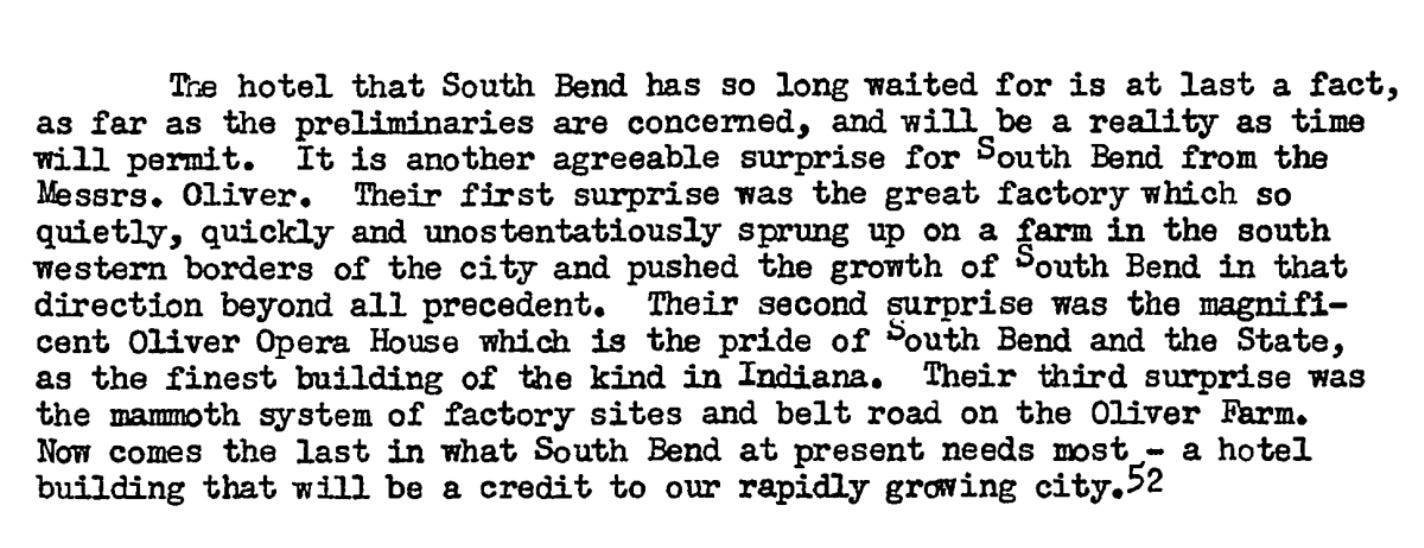Local Investing is Different, Local Firm Ownership, & Gift Culture
Small Cities Weekly | 09.26.2025
After a hiatus, Small Cities Weekly is back. I’m trying to get back on a weekly cadence and hopefully share some essays I’ve been thinking a lot about. I also have a new project in the works - more on that soon!

Local Investing is Different
Most institutions in a place like South Bend that invest, don’t exist to be investors. Investing is just a business model that funds their real work — healthcare, education, philanthropy, family enterprise. The purpose is not the returns; the returns fuel the purpose.
While their investments can span the globe, their work depends on the resilience of a particular place. Almost all of their actual activities happens locally. If the local environment becomes unstable — if people leave, if infrastructure falters, if employers fade, if housing is scarce — their work gets harder, no matter how well their investing portfolio is performing.
There are many frameworks that institutions can use to define the interaction they want their investing activities to have with their core work.
Traditional Investing focuses on earning returns, which are then used to further a mission.
Impact Investing focuses on earning returns while furthering a mission.
Local Investing focuses on earning returns while strengthening the conditions on which the work of a mission depends.
Impact investing and local investing both use capital in ways that go beyond the traditional model. But they are not the same.
Impact investing is valuable and important — it broadens the tools available to advance a cause. Local investing is also valuable and important, but it is different. It’s not about advancing the work directly; it’s about stabilizing the local environment so that the work can thrive.
This is why very different institutions — a hospital, a university, a foundation, a family office — can invest side-by-side in local resilience. Their missions aren’t the same, but their dependence on a resilient local community is.
Local investing is a common ground — it protects the ability to carry out the work at all.
Links
You can find links from this and all previous editions here.
Does Local Firm Ownership Matter?, David Fleming and Stephan J. Goetz
Economic growth models that control for other relevant factors reveal a positive relationship between density of locally-owned firms and per capita income growth, but only for small (10-99 employees) firms, while the density of large (over 100 workers) firms not owned locally has a negative effect.
The conclusions of this paper is that across geographies, densities, and industries, it’s the small, locally-owned firms that do the heavy lifting on raising per capita income. The more distant ownership becomes, and the larger the company, the less that is so - and in fact, can actually depress per capita income.
The sweet spot in the missing middle. (or: The virtues of the small-TAM technology company.), Vaughn Tan
The intersection of technology deployment and traditional industries is an area overdue for innovation — especially in expanding what we valorise and support in technology entrepreneurship.
VC funding is crucial for driving highly uncertain new technology development. But we already valorise unicorns and have extensive infrastructures for funding and supporting VC-type tech entrepreneurship.
What’s underserved is the traditional industries that are the backbone of every economy, and especially the SMEs in those industries. Supporting these traditional businesses strengthens the whole economy. Apart from encouraging VC funding models and business models, we also need to fund and focus on the sweet spot in the missing middle: Developing a dense layer of small-TAM technology companies to service these traditional mid-size firms.
There’s literally no other way to equip these traditional industries to create jobs and foster long-term economic growth.
I’m always curious how small cities can position themselves uniquely in the startup and tech discussion. My experience is that these places have a density of the customers Tan references here, and a culture that would make a great home for the starting, building, and growing of a small-TAM tech company.
Innovation Takes Magic, and That Magic Is Gift Culture, Alex Danco
I think the people who are going to be big winners in this new age of instant prototyping are the people who are exceptional at gift culture. Because they will understand the scarce resource of this new environment, which guess what, was the same scarce resource before too - the ability to coordinate people, over time, towards promising but unknowable goals. That’s always been the hard part, and it feels magical when we solve it.
From the outside, angel investing may look like it’s motivated simply by money. But there’s more to it than that. To insiders, it’s more about your role and reputation within the community than it is about the money. The real motivator isn’t greed, it’s social standing – just like a century ago, with the original Angels who financed Broadway shows. Angel investing is how you stay relevant. It’s how you keep getting invited to things. It’s how you matter. Angel investing isn’t about getting something, it’s about being someone.
In an environment like this, angel investments are the ultimate flex. They’re the universally permissible bragging format: half “I saw this potential when none of you did” and half “I was invited to this deal and none of you were.” I don’t mean to say here that all angel investment is social posturing – some angel investors are among the kindest, most humble and helpful people I know. But the social returns to angel investment aren’t just a happy side effect. They’re often the main thing people are really after.
You can reach me at dustin@invanti.co if you want to chat more about the small city segment!


Found the gift culture link fascinating (as someone with little exposure to or knowledge around Angel investing - great summary / highlights!). The general idea is unsurprising, but the history and detailed mechanics of it are interesting!